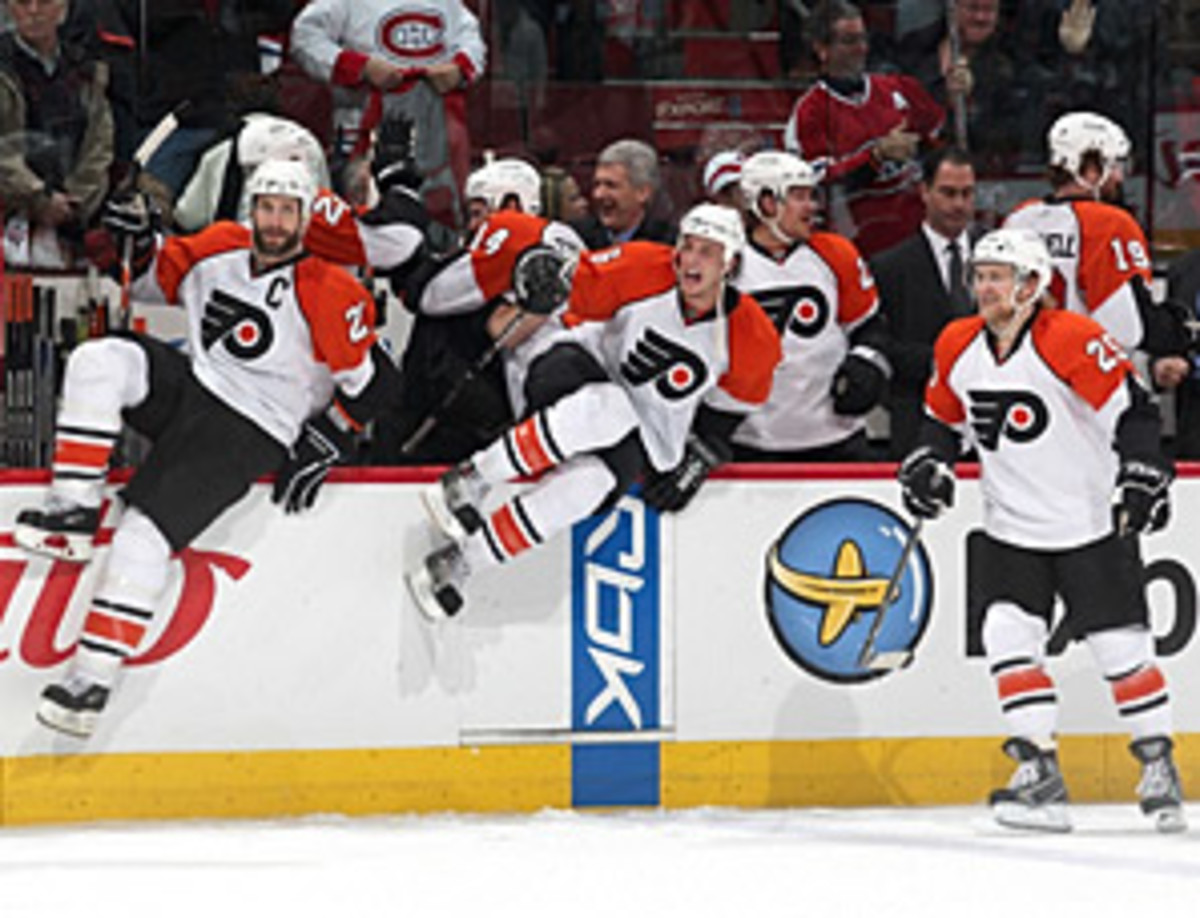New beginning in Philadelphia
Yes, the Flyers' season was a roller coaster affair fraught with wild swings of winning and losing. Assurance of playoff participation didn't arrive until the final weekend of the regular campaign. So, while the Flyers returned to prominence in stunning fashion, they did it in the NHL's most competitive -- top to bottom -- environment ever. Outside of the Detroit Red Wings, wire-to-wire dominance is a notion attached to bygone eras, meaning guarantees of sustained future success are flimsy.
Still, the Flyers' miraculous makeover seems to bode well for many years to come. It began in October of 2006 when GM Bob Clarke -- long the symbol of what it means to be a Flyer -- stepped down as GM and John Stevens took over for Ken Hitchcock behind the bench. Whatever transpired between Clarke and Chairmen Ed Snider isn't important in detail. What is noteworthy is the show of leadership at the top. Clarke was tired and knew deep down that the job needed another touch. Snider respectfully responded by naming Assistant GM Paul Holmgren as the interim manager and reinforced the direction and standards of the hockey club.
Holmgren made short work of the interim tag by moving swiftly and boldly in remodeling Philly's roster. He pilfered budding star defenseman Braydon Coburn, 22, from the Atlanta Thrashers. He worked over the Nashville Predators in separate deals to acquire gritty forwards Scott Upshall, 24, and Scott Hartnell, 25, as well as veteran backliner Kimmo Timonen, 33, -- himself a supreme defender and powerplay specialist. Next, Holmgren hoodwinked the Edmonton Oilers in a deal that netted defenseman Jason Smith, 34, -- who serves as the Flyers' captain -- and forward Joffrey Lupul, 24. Finally, Holmgren raided the Buffalo Sabres, trading for goaltender Martin Biron, 30,and re-signing him to a long-term deal, then signing free agent centerman Daniel Briere, 30, a powerplay catalyst.
Holmgren's actions and acumen impressively restocked the resources. Bringing it all together is Stevens. His impact wasn't as obvious early on as Holmgren's breathtaking activity. Stevens took over for Hitchcock, having served just eight games as an NHL assistant coach. He was promoted from the Flyers' AHL affiliate where he guided the Philadelphia Phantoms to the Calder Cup -- the culmination of five seasons behind their bench. The rest of that tumultuous first season with the Flyers saw Stevens' record read a paltry 21-42-11, leaving many unanswered questions.
The questions have subsided, but the pressure never does in Philly. Stevens quiet outward exterior belies a deep caring and understanding of each player's strengths and how best to bring those attributes to the fore. He researched the incoming players, dissecting tape and talking with their former coaches and teammates so that when he met with his new charges, he had a solid sense of them as people and performers. The first meetings between the coach and the new Flyers were more than starting points -- they were more focused as integration discussions.
The easy proof that Stevens is the right guy for the team is their Eastern Conference Finals appearance. The deeper truth -- the reason his handling of this group will resonate for a long time -- is that all of the young players improved this season under Stevens' guidance. From Coburn to Mike Richards, 23,to Lupul to Jeff Carter, 23, to Upshall and even the likes of role players Riley Cote, 26, and Steve Downie, 21, the tutelage of Stevens allowed all of them to grow as players. The reward is a renaissance -- one that shunned the terms "rebuilding" and "five-year plan."
Now that's leadership...right across the board.





